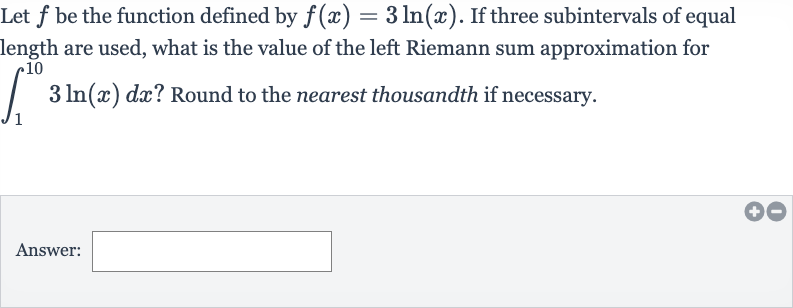Full solution
Q. Let be the function defined by . If three subintervals of equal length are used, what is the value of the left Riemann sum approximation for ? Round to the nearest thousandth if necessary.Answer:
- Calculate Width of Subintervals: To calculate the left Riemann sum, we first need to determine the width of each subinterval. The interval has a length of . Since we are using three subintervals of equal length, each subinterval will have a width of .
- Find X-Values for Left Riemann Sum: Next, we need to find the -values at which we will evaluate the function for the left Riemann sum. These -values are the left endpoints of each subinterval. The first subinterval is , the second is , and the third is . Therefore, the -values are , , and .
- Evaluate Function at X-Values: Now we evaluate the function at each of these x-values. , , and .
- Calculate Left Riemann Sum: We can now calculate the left Riemann sum by multiplying each function value by the width of the subintervals and summing them up. The left Riemann sum is .
- Substitute Function Values: Substitute the function values into the sum to get the approximation: + + .
- Perform Multiplication: Perform the multiplication: .
- Calculate Numerical Values: Calculate the numerical values: .
- Calculate Approximation: Using a calculator, we find that and . So the approximation becomes .
- Perform Final Calculations: Now we perform the calculations: .
- Round to Nearest Thousandth: Adding these values together gives us the left Riemann sum approximation: .
- Round to Nearest Thousandth: Adding these values together gives us the left Riemann sum approximation: . Round to the nearest thousandth if necessary. The approximation is already at the thousandth place, so rounding is not needed. The final answer is .

